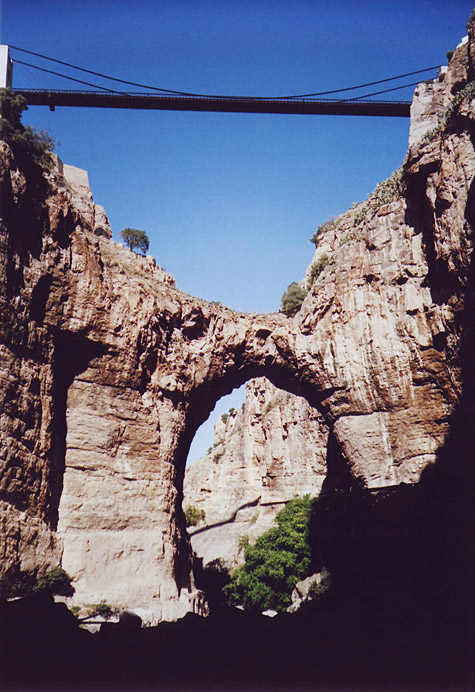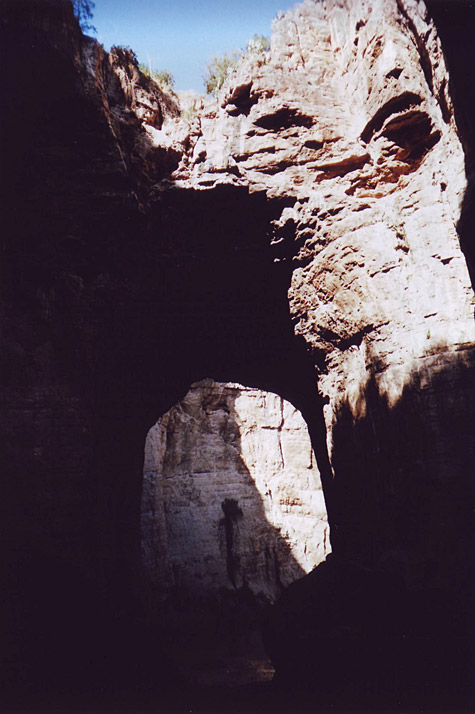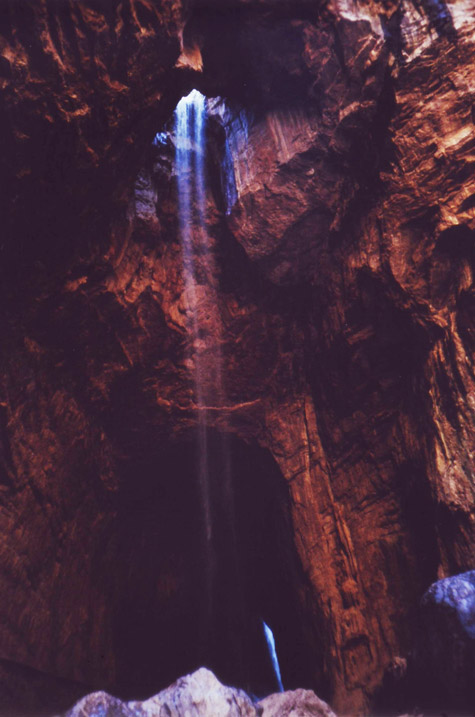The Natural Arches of Constantine
by Guilain Debossens
From SPAN April 2008
Daniel Putelat and I visited the graceful Natural Bridge of Rhummel Gorge (ALG-1) while on the way to Djanet in October 2007. Located at the canyon exit in the city of Constantine in northern Algeria, it is certainly one of the great natural bridges of the world. The gorge is located immediately under the old city and is 1.8 kilometers long by 200 meters deep. For millennia, the Rhummel River (Oued Rhummel) burrowed its way underground. This subterranean natural tunnel collapsed in places and formed this graceful natural arch followed by two other openings in the inner gorge.
The city of Constantine was built by the Numidian people in the 4th century BC. Later in time, the city was called "Cirta" and was included in the Roman Empire around 300 AD. Constantine was a theater of numerous sieges (around 82 from historic records) during its long history. The last one was in 1837 by the French army. The city has been subject to runaway growth, its population increasing from 100,000 in the 1950s to 480,000 people today.
Immediately above the graceful arch of the largest natural bridge, the suspension bridge of Sidi n' Cid soars 175 meters above the Rhummel River (photo below). This 17-ton bridge was opened in 1912 during French settlement. The suspension bridge offers a good opportunity to see the natural arch from above. It is also a nice indicator for comparison of the height of the natural bridge. We tentatively tried to measure the span of the arch, but the amount of running water under the bridge did not permit that (it had been very rainy before our visit). However, we did measure a distance of 15 meters from the north abutment to the water of the river with a steel tape. From this observation it is clear that the span is over twice that (30 meters at least). The height, therefore, would be about 45 to 50 meters. Thus it is not large enough to be in the top 10 of the largest arches in the world, but this magnificent natural bridge is a true gem.

The largest natural bridge (with the suspension bridge of Sidi n' Cid high above).
While we were there, some Chinese workmen were building a pipeline at the canyon exit near the road bridge of "Les Chutes" (The Waterfalls). These workmen were being watched by militiamen (not from the regular Algerian army) armed with guns and ammunition belts. The militiamen accompanied Daniel and me during our first visit to the natural bridge for our "security", but these men did not walk as far into the gorge as we did. The largest of the three natural bridges is located 200 meters into the gorge, and it is easy to visit from the road that follows along the stream of the Rhummel.
We enjoyed the exceptional size and beauty of this arch. However, we were surprised to discover that the water in the river is like sewage. I suspect that many sewage lines in the city flow directly into the canyon in an already highly polluted stream. Waste and rubbish of all sorts are strewn along the side of the river. Many plastic bottles float in the stream along with the putrefying, dead bodies of animals. It is an obvious ecological problem in this otherwise beautiful area.
The second natural bridge (photo below) is located 150 meters further into the canyon. Access to the other side of the bridge is challenging. You have to climb steeply out of a muddy basement to get on the other side to get a decent picture. Also it is challenging to photograph in the fall light.

The second natural bridge.
The third bridge (the smallest one) is located just before the entrance of a deep and dark natural tunnel (photo below). It has what looks like an attractive waterfall jumping through it, but this turns out to be part of the sewage drainage mentioned above. The strong, nauseating odor removes any doubt about this. So after visiting the gorge, we headed back to the hotel for a decontaminating shower. A graceful natural bridge in a dirty place….

The third and smallest bridge looks much better than it smells.